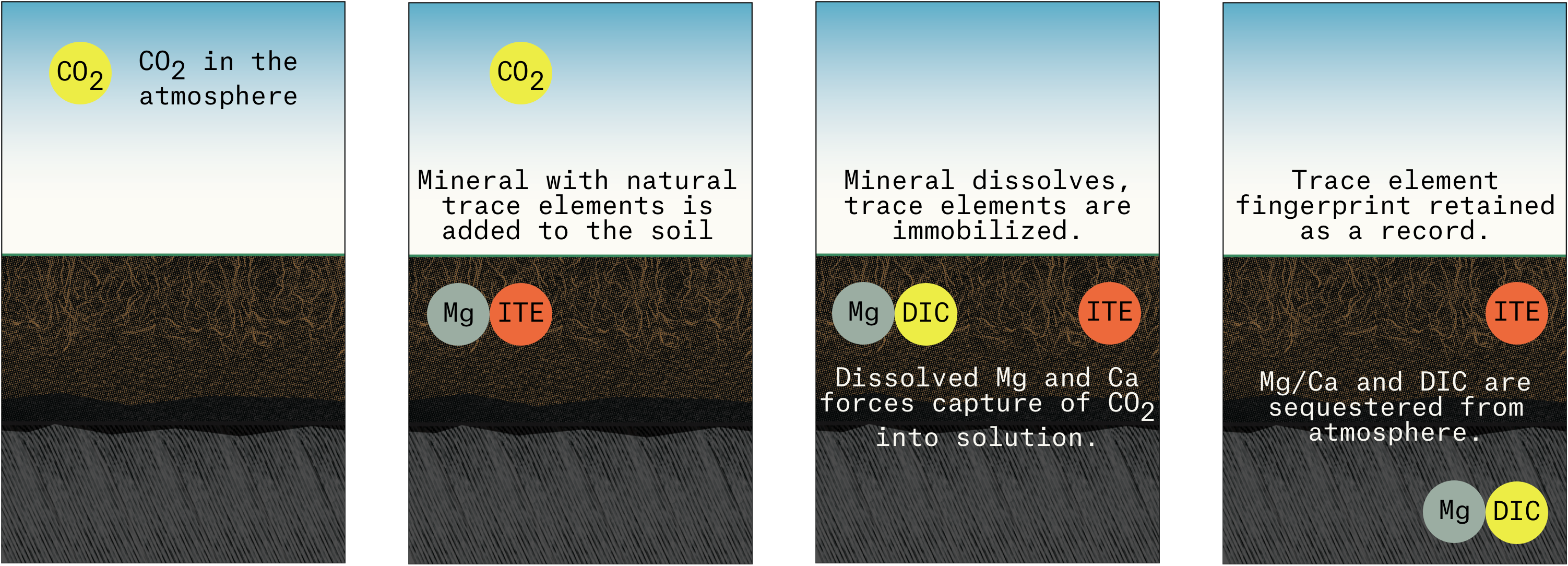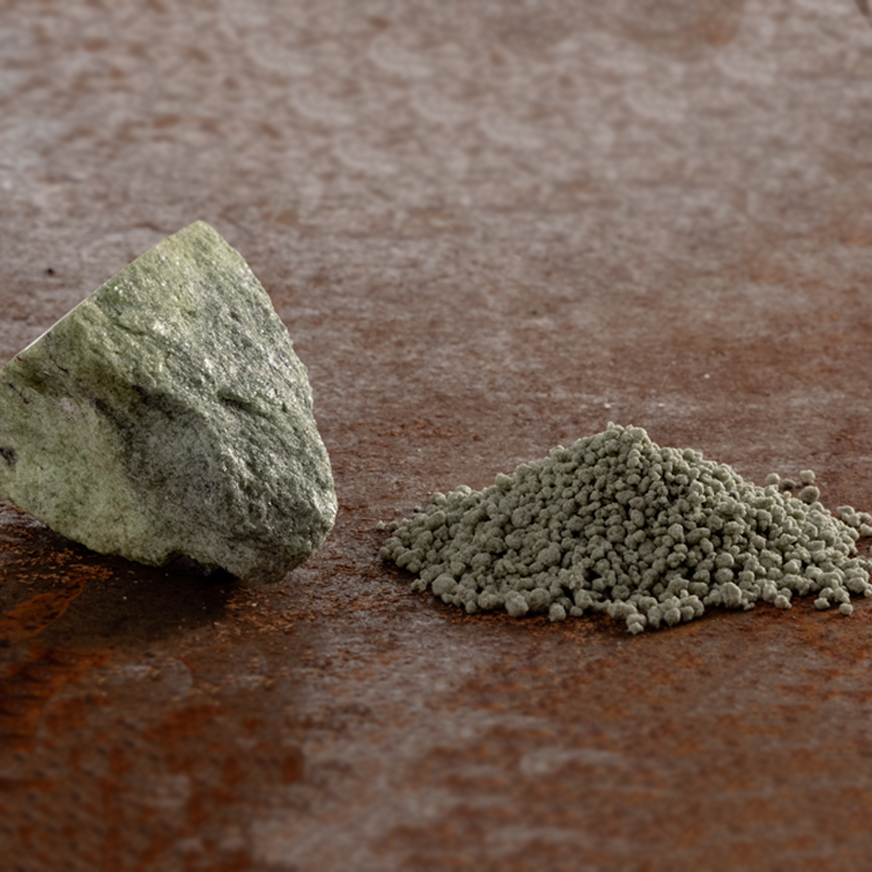Measuring carbon removal is a riddle – essentially trying to prove that something (an invisible gas) is no longer there. To date, the cleanest way of doing this was to rely on machinery that could deliver a clear input and output. But building and scaling machinery is expensive and can be technologically risky, which is why scientists have long looked to natural processes that do the heavy lifting for us. Enter enhanced rock weathering (ERW).
ERW has long been known to be an elegant way to clean up the atmosphere. The catch was you couldn’t measure it. When we started digging into ERW, we realized it would only be possible to scale with precise measurement and rigorous science. So, innovating a scientifically sound measurement approach has been Eion’s focus from day one.
Looking for Fingerprints in the Soil
Eion directly measures carbon dioxide removed by mineral weathering in soils using immobile trace elements to show applied minerals removed CO2 from the atmosphere. It’s then transported away and permanently sequestered.
We take pre- and post-application tests and compare these measurement results to verify the amount of minerals applied, the total CO2 removed, and trace elements and micronutrients remaining in the soil. Ultimately, we can measure the carbon removed by quantifying the alkalinity fluxes from the root zone into the subsoil; the flow of alkalinity from magnesium is matched by a flow of alkalinity in the form of dissolved carbon.

In the field, and translated to plain English, Eion tests soil before and after applying minerals. When we compare these two samples, we’re looking for a “fingerprint” – something left behind when the minerals dissolved and absorbed carbon dioxide. This soil fingerprint is a trace of elements and micronutrients in the minerals that didn’t dissolve.
Getting Measurement Done in the Field
Figuring out how to measure carbon removal is only half the challenge; getting it done in the field (at scale) is another ball game. True to our commitment to doing right by farmers, we wanted to avoid placing the extra work of measurement on growers, so we figured out how to fit ourselves into how they already handle soil sampling, which is a routine farm management practice.
Farmers use soil sampling to look at soil properties and make decisions about nutrient applications to increase crop yield, reduce costs and minimize environmental impact. Usually, this happens before planting or after harvesting, which is why Eion’s carbon removal project timelines coincide with growing cycles.
This looks like:
- First, Eion’s trusted local crop advisors and soil specialists create an application strategy best suited for a particular grower’s fields, agronomic needs, and land management goals. They determine the amount of olivine to apply per acre to remove carbon and improve the farmer’s crop yields.
- Then, Eion’s partners take direct soil measurements before applying olivine to farmland. These are routine samples that the farmer and their agronomists take already.
- Once the crops are harvested, our team returns to take a second soil sample. This happens at the same time farmers and agronomists are out in fields tending to the soil, planting cover crops, tilling, spreading manure, etc.
- In the lab, Eion compares these two measurement results (looking for that soil fingerprint) and verifies the amount of olivine applied, the total CO2 removed. Usually, six to nine months after applying olivine, Eion can show that 40% to 70% of the mineral has dissolved, capturing atmospheric CO2 that will be permanently stored in the ocean.
By using the soil samples agronomists already take to measure carbon removal precisely, we can prove that ERW removes carbon and put the process into practice at scale in the field.
